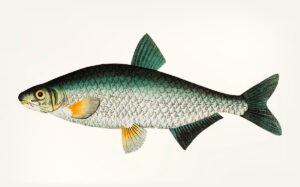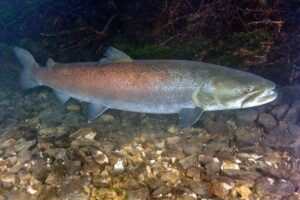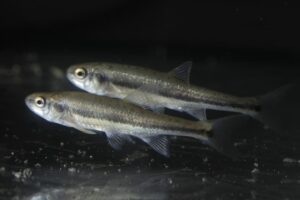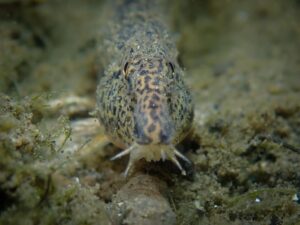Bottom Feeder: European Eel or Common Eel (Anguilla anguilla)
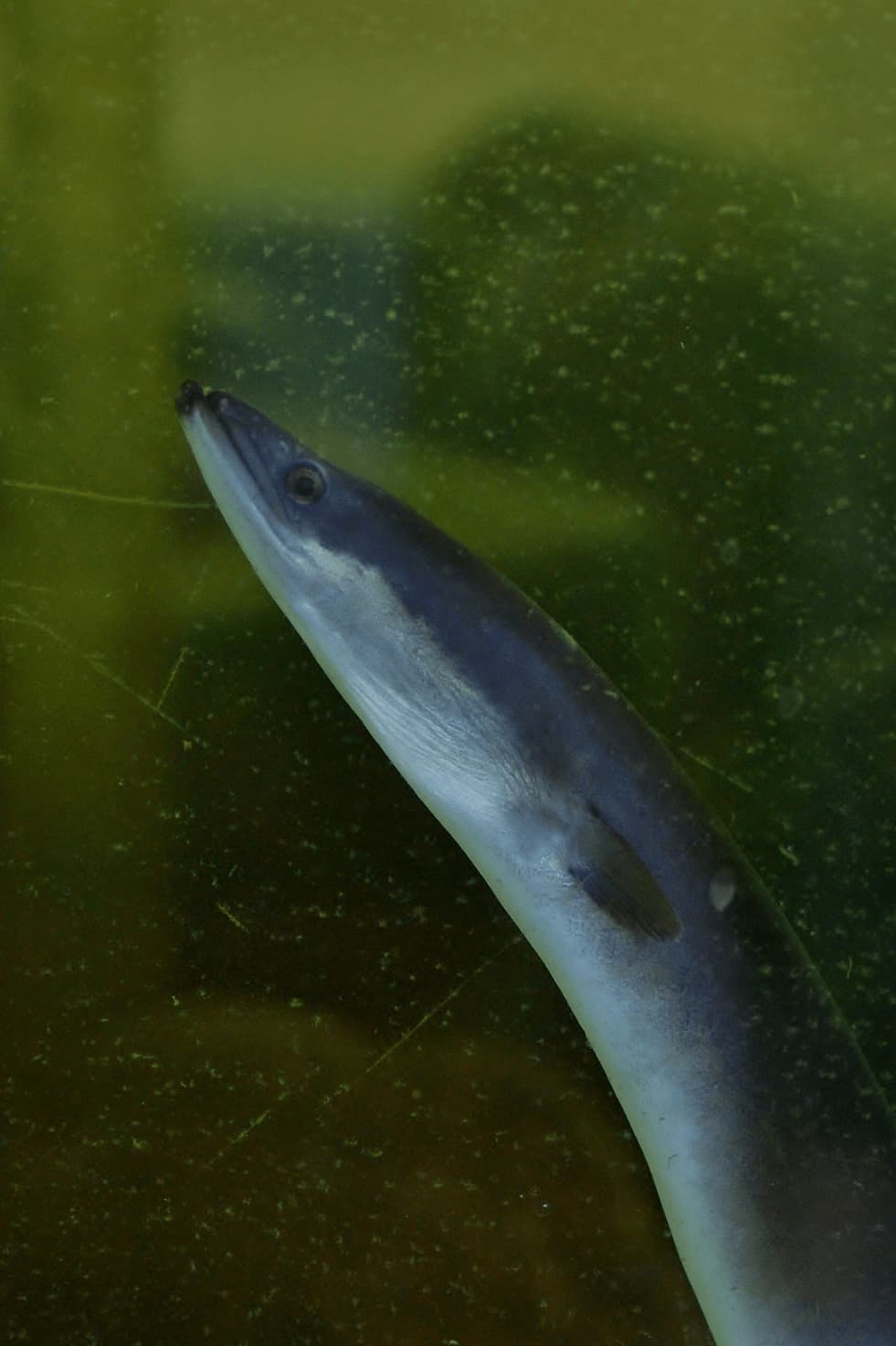
The European Eel, also known as the Common Eel (Anguilla anguilla), is a snake-like fish that is highly sought after by freshwater anglers.
This eel exhibits a catadromous behavior, living in freshwater environments and migrating to the open sea for reproduction. It is not only valued for its culinary uses but also for the challenge it poses to anglers, as it fights vigorously until the last moment. Unfortunately, the European Eel is currently facing threats due to the presence of numerous dams that hinder its reproductive migration.
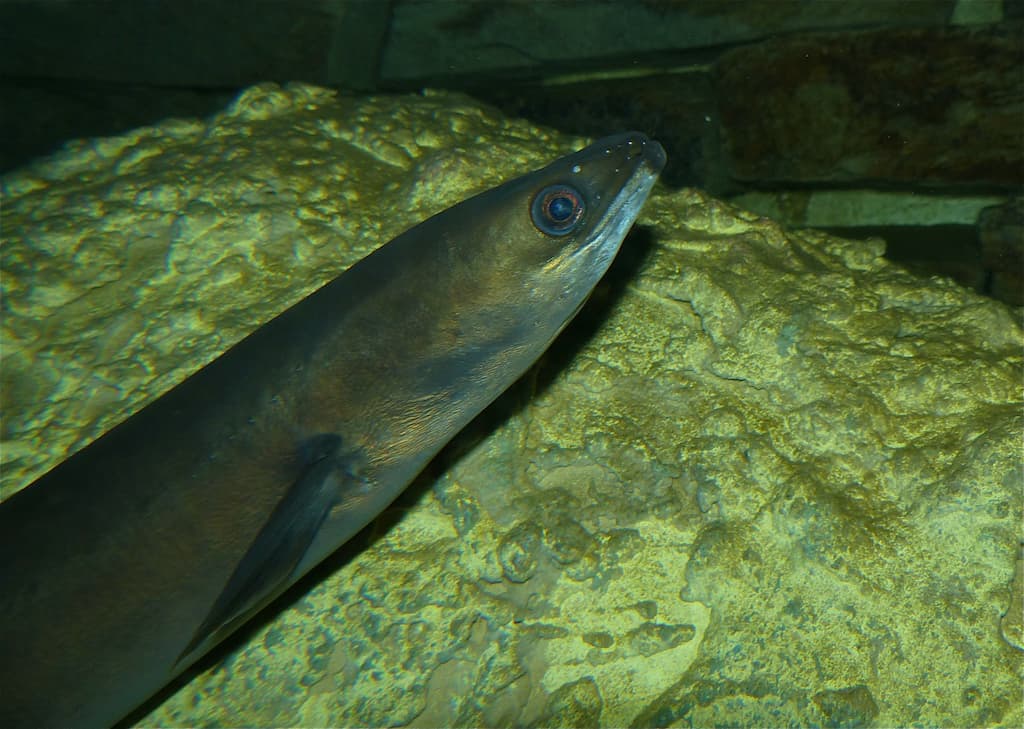
Description of a Fish: European Eel or Common Eel
Determination
The European Eel has a serpent-like body with a circular and elongated cross-section, which earns it the nickname “water snake.” It possesses a relatively large head, with a small round eye and a terminal mouth. The lower jaw is longer than the upper jaw. The dorsal, caudal, and anal fins are fused, and the European Eel lacks pelvic fins. However, it has small but well-developed pectoral fins.
| Class |
| Actinopterygii |
| Order |
| Anguilliformes |
| Family |
| Anguillidae |
| Genus |
| Anguilla |
| Species |
| A. anguilla |
| Binomial Name |
| Anguilla anguilla (Linnaeus, 1758) |
Size and Weight
The average size of the European Eel ranges from 40 to 60 cm, weighing between 250 g and 1 kg. Males rarely exceed 50 cm in length. The largest individuals can reach up to 1.50 m in length and weigh around 9 kg.
Lifespan
The European Eel typically has a lifespan of 12 to 20 years. However, eels in captivity can live up to 50 years.
Habitat and Lifestyle of European Eel (Common Eel)
Habitat
The European Eel is found throughout Europe, from Portugal to the northern part of Norway, as well as along the Mediterranean coast. Its distribution extends westward to the Sargasso Sea. Some eels migrate far into freshwater environments, while others spend their entire lives in the sea. The European Eel is predominantly nocturnal, burying itself in the mud during the daytime. Interestingly, it is capable of moving and even hunting outside of water, thanks to the protective mucus covering its body.
Feeding Habits
During the “yellow eel” stage, the European Eel is a predominantly nocturnal scavenging predator. Its prey consists of insect larvae, crustaceans, live or dead fish, and even amphibians and rodents for larger individuals. Eels living in the sea primarily feed on crustaceans and small fish. In the “silver eel” stage, the European Eel does not feed and survives on the fat reserves accumulated during the “yellow eel” stage.
Reproduction
Between the ages of 6 to 12 years for males and 10 to 20 years for females, during the autumn, the European Eels undergo a series of biological and physiological transformations from the “yellow eel” stage to the “silver eel” stage. Their coloration changes, scales become distinct, their head becomes narrower, and their eyes enlarge. The eels also experience regression of the digestive tract. At this stage, they leave rivers, and their sexual maturity is completed during their long journey that leads them to the Sargasso Sea for reproduction. Females lay hundreds of thousands of eggs, which soon transform into larvae known as “glass eels.” The adult eels die after spawning, while the glass eels start their reverse journey back to freshwater habitats where their parents lived. There, they develop into the “yellow eel” stage.
Importance of the European Eel (Common Eel)
The European Eel is highly valued for its culinary uses, although it is considered overfished. It is a delicate and fragile fish. Additionally, the European Eel has gained popularity in the aquarium trade due to its potential for long-term captive life. For anglers, the European Eel presents a significant sporting challenge, as even small eels put up a fierce fight until being brought out of the water.
Fishing Techniques for European Eel
European Eels are typically targeted using sturdy bottom fishing rigs baited with worms, dead fish, or meat chunks. Once hooked, it is essential to apply strong and consistent pressure on the line, without giving the eel any slack, as it can easily entangle itself around obstacles, making it impossible to land. Eels are most active during the night, so fishing during nocturnal hours is advised if permitted by local regulations. Alternatively, dawn and dusk periods can also be productive.
Common names for European Eel
European Eel (Common Eel) is also known as Weed Eel or Sing Eel in UK.
Most popular common names for the European Eel are Anguille (french), Aal or Flussaal (german), Anguilla (italian), Anguila (spanish), Aal (dutch) and Wegorz (polish).
Conservation Status of the European Eel (Common Eel)
The European Eel is classified as critically endangered (CR) on the IUCN Red List. This designation indicates an extremely high risk of extinction in the wild.

